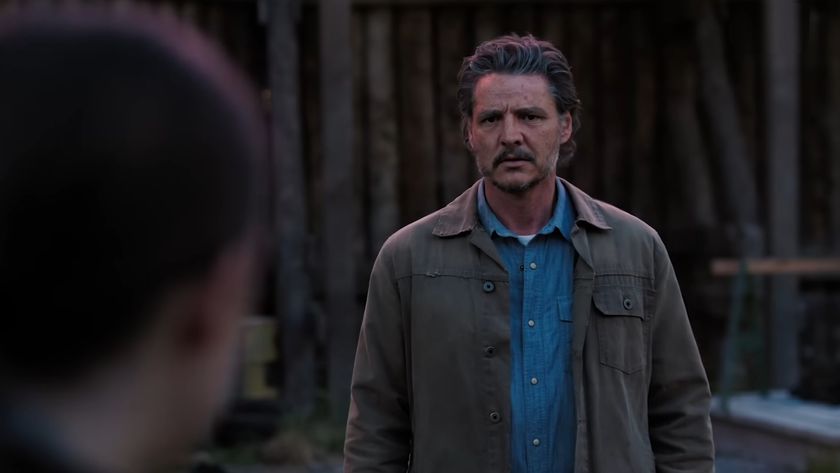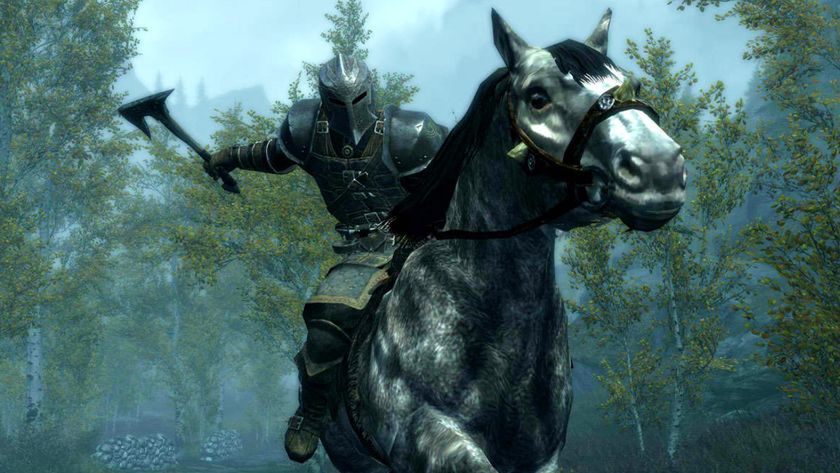Jeffrey Thomas's new book Deadstock is out now from Solaris (visit www.solarisbooks.com for more info). We badgered the author, whose previous novels were also set in Punktown, about the inspiration behind his work.
SFX: Tell us a little bit about the plot of Deadstock.
Jeffrey Thomas: "Deadstock takes place in the city called Punktown, an Earth-established colony on a far world, populated by countless alien races. The protagonist, Jeremy Stake, is a private investigator hired by wealthy business owner John Fukuda, partly because of Fukuda’s fascination with Stake’s strange disorder. If his concentration settles on another person for too long, Stake’s face and body subtly alter and take on the characteristics of that person. To Stake it’s a curse, but a useful one; it enables him to assume other identities in the course of his work. The work Fukuda has hired him for is to find out who stole an invaluable living doll from his teenage daughter, Yuki. Fukuda’s corporation manufacturers bioengineered life-forms that can serve as labour, like organic automatons, but he also creates primitively alive playthings, such as Yuki’s missing doll."
"Meanwhile, a tough street gang has ventured into one of the more affluent sectors of Punktown, and come across an abandoned apartment complex. In search of a comrade gone missing the day before, they break inside the building, and there encounter a group of mutant squatters who have been trapped in the building for days by faceless creatures they call the Blank People. These are bioengineered beings that would have been provided to the owners of the apartments as servants and security guards, but something went dangerously wrong with their 'programming'. Now little more than mindless killing machines, the Blank People view the gang and mutant squatters as an infestation of vermin to be contained and destroyed. As the novel proceeds we see how these two storylines are related, and how John Fukuda’s creations are more dangerous and potentially powerful than even he might have imagined."
SFX: Where did the original idea for Punktown come from?
JT: "I first conceived of Punktown back in 1980, and it was an image that set it off, but a broader concept must have been brewing under the surface for a while. I saw a woman in another car whose hair was hanging down from her shadowed face in such a way that it looked like it was streaming from her eye sockets. That image inspired an alien race who have ocular tendrils in place of eyes. Along that drive my mind kept racing, and I thought I’d like to write a story that would not so much speculate about the future as focus on our own society through a distorting lens – sort of like how I saw that woman’s face in the funhouse mirror of my imagination. So I wrote an initial (as yet unpublished) novel, and more novels and short stories in the wake of that, because it was a world I grew very comfortable in, for the same reason I think that readers have been comfortable there."
SFX: When writing a new Punktown story, you obviously have the location already figured out, so what comes next: character, plot, high concept?
JT: "It would more likely be an interesting concept, and then I’d bring in the characters most appropriate to experience it. But because Punktown as a location is so diverse, a new part of it might in itself inspire a particular story. For instance, the apartment complex staffed by the Blank People existed before any of the characters who get trapped inside it. And the concept of a stolen, priceless living doll came to be before I created Jeremy Stake to do something about it. I feel a bit like a genetics tycoon myself, bringing all these different beings into existence to do my bidding!"
SFX: What inspired the particular story we find in Deadstock?
JT: "Well, the main thrust of it really came from that idea of a cute but monstrous kind of doll collected by upper-class schoolgirls, somewhere between a Pokemon and a golem, with one such doll being stolen so that a private eye has to go in search of it – a sort of living Maltese Falcon. At first Stake wasn’t the chameleon that he is, at first, but the theme got me thinking about issues of identity in a time when life can be mass produced as product. That’s why there is a recurring theme of facelessness in the novel: Stake’s affliction, faceless creatures such as the Blank People, a faceless sect of monks, Yuki’s doll with its absence of conventional features, not to mention an exploding head or two..."
SFX: You’ve been published in a lot of places – what has stood out as your proudest moment?
JT: "Maybe it was holding that first copy of the original Punktown, published by the Ministry of Whimsy Press, in my hands, marvelling at its beauty and soaking in the fact that after writing about Punktown for twenty years, a chunk of that world now lay between two covers. There have been other milestones for me, too – from the first acceptance of my work in the late 80's (a poem), to having HR Giger supply the cover art and interiors for the German language, limited edition hardcover of Punktown (he also signed every copy), to just yesterday seeing Deadstock for the first time in a US mall."
Sign up to the SFX Newsletter
Get sneak previews, exclusive competitions and details of special events each month!
SFX: For you, what is the key to good horror and fantasy?
JT: "If there were only one key to horror and fantasy they would be a boring endeavour; the key is that there has to be too many doors for a single key to open. But the simple answer would be: good fantasy makes you feel transported to another world, an impossible world, and then makes you feel as at home there as in the natural world; good horror makes you feel your familiar world has been transformed into someplace where you can no longer feel at home. Both genres work like dreams, that trick us into believing in another brand of logic. I like to say that I don’t let science get in the way of my science fiction – I see myself as a storyteller first and foremost. The trick is that no matter how wild I let things get, I have to maintain the readers’ suspension of disbelief, and their trust in me. That’s what good SF, fantasy and horror is about: trusting the writer to sit behind the wheel and take you on a ride that’s worth the time spent away from your real world."
SFX: Any tips for short story writers who want to enter our Pulp Idol competition?
JT: "Like I need more competition, after I’ve worked so hard to get here?! I think new writers are best advised to read as widely as they can, not just in one particular genre. I believe that being too immersed in, say, only horror or fantasy can lead to stagnancy, a feeling of in-breeding. An example I like to give is my short story The Flaying Season. It concerns the mental breakdown of a woman who’s had her memory selectively edited, and her breakdown is externalized in her environment: an alien neighbourhood in Punktown that becomes increasingly disturbing and decayed to mirror her psychological state. I was inspired in this by reading Hardy’s Tess of the d’Urbervilles, where the heroine’s emotional phases find their counterpart in the changing of the seasons, with all the poetic and symbolic detail Hardy brings to them. Does that sound pretentious? Well, you want to win that competition, right?"
"And another thing is to put your individual stamp on it; you’re learning from these other writers, but not cloning them. Sprinkle your concoction liberally with your own freckles, moles, scars and other identifying marks. The same song can be sung by two people, one whose voice seems to be hitting all the notes but is unremarkable, and one whose voice is quirky, unusual, and which might take some getting used to but in the end will linger in the listener’s memory."
SFX: What’s your next project and when will we see it?
JT: "There’ll soon be another Punktown novel out, called Health Agent, from Raw Dog Screaming Press. Health Agent is similar to Deadstock in being a detective-style thriller that deals with the questionable use of future technologies – science used as a plaything. Health Agent was written in the late 80's, though, and handwritten no less! There has also been some interest in Deadstock as a film project, and my novel Letters From Hades has been optioned, so I’m hoping that something might come to fruition along those lines. And then there’s the follow up to Deadstock that I’ve just signed a contract for with Solaris, called Blue War, which will take Jeremy Stake back to the world where he fought as a soldier a decade earlier, in order to solve yet another strange mystery."
Deadstock was the Star Letter prize in SFX issue 154 . You can read the SFX review of Deadstock in issue 155 , on sale now.
SFX Magazine is the world's number one sci-fi, fantasy, and horror magazine published by Future PLC. Established in 1995, SFX Magazine prides itself on writing for its fans, welcoming geeks, collectors, and aficionados into its readership for over 25 years. Covering films, TV shows, books, comics, games, merch, and more, SFX Magazine is published every month. If you love it, chances are we do too and you'll find it in SFX.

The Last of Us HBO showrunner says "flat out" that "I am not going to go past the game" like Game of Thrones did with George R.R. Martin's novels

New Black Mirror season 7 trailer reveals how Will Poulter's Bandersnatch character returns to the Netflix show - with a Sonic the Hedgehog namedrop











